
The Mangalarga Marchador is a Brazilian breed of riding horse. It is the national horse breed of Brazil, where there are more than half a million of them; it is among the most numerous breeds of riding horse in the world. It derives from cross-breeding of Portuguese Alter Real horses with local Criollo stock. It displays four gaits: the walk, the canter, and two ambling gaits, the marcha batida and the marcha picada; it does not trot.

The Lusitano, also known as the Pure Blood Lusitano or PSL, is a Portuguese horse breed. Horses were known to be present on the Iberian Peninsula as far back as 20,000 BC, and by 800 BC the region was renowned for its war horses. The fame of the horses from Lusitania goes back to the Roman Age, which attributed its speed to the influence of the West wind, who was considered capable of fertilizing the mares. When the Muslims invaded Iberia in 711 AD, they brought Arabian horses with them that were crossed with the native horses, developing a horse that became useful for war, dressage and bull fighting. The Portuguese horse was named the Lusitano, after the word Lusitania, the ancient Roman name for the region that modern Portugal occupies. There are four main breed lineages within the breed today, and characteristics differ slightly between each line.

The Criollo, or Crioulo, is the native horse of the Pampas with a reputation for long-distance endurance linked to a low basal metabolism. The breed, known for its hardiness and stamina, is popular in its home countries.

Equine conformation evaluates a horse's bone structure, musculature, and its body proportions in relation to each other. Undesirable conformation can limit the ability to perform a specific task. Although there are several faults with universal disadvantages, a horse's conformation is usually judged by what its intended use may be. Thus "form to function" is one of the first set of traits considered in judging conformation. A horse with poor form for a Grand Prix show jumper could have excellent conformation for a World Champion cutting horse, or to be a champion draft horse. Every horse has good and bad points of its conformation and many horses excel even with conformation faults.
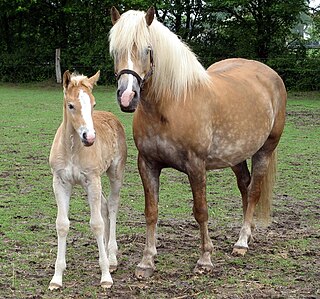
The Haflinger, also known as the Avelignese, is a breed of horse developed in Austria and northern Italy during the late 19th century. Haflinger horses are relatively small, are always chestnut with flaxen mane and tail, have distinctive gaits described as energetic but smooth, and are well-muscled yet elegant. The breed traces its ancestry to the Middle Ages; several theories for its origin exist. Haflingers, developed for use in mountainous terrain, are known for their hardiness. Their current conformation and appearance are the result of infusions of bloodlines from Arabian and various European breeds into the original native Tyrolean ponies. The foundation sire, 249 Folie, was born in 1874; by 1904, the first breeders' cooperative was formed. All Haflingers can trace their lineage back to Folie through one of seven bloodlines. World Wars I and II, as well as the Great Depression, had a detrimental effect on the breed, and lower-quality animals were used at times to save the breed from extinction. During World War II, breeders focused on horses that were shorter and more draft-like, favored by the military for use as packhorses. The emphasis after the war shifted toward animals of increased refinement and height.

The Mangalarga is a horse breed that was originally developed in Brazil by Francisco Gabriel Junqueira, the Baron of Alfenas, when he began breeding Alter Real stallions from Portugal with local Colonial Spanish mares on his lands in Baependi County at Minas Gerais State.
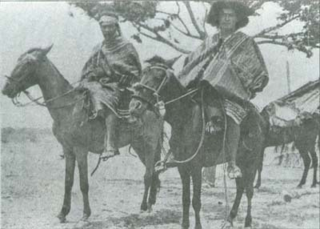
The Criollo Cubano originates from Spanish horses brought to Cuba by Diego Velázquez in 1511. There are four different breeds known as criollo: the Cubano de Paso, the Pinto Cubano, the Criollo de Trote and the Patibarcino. It is a small stout breed used by the Guajiro people.
The Peneia Pony is a rare breed of pony from the Peloponnese in southern Greece, originating in the former prefecture of Elis, which included the village of Peneia (Pineia).

The Nordlandshest/Lyngshest also known as the "Nordland/Lyngen horse", "nordland horse" or "Lyngen horse", is a horse breed originating in Norway. It is the smallest of the three Norwegian national horse breeds. It originated in Lyngen, but was given the name Nordlandshest in 1968 by breeders in that area. The name change was hotly disputed by breeders in Lyngen and surrounding areas, but a compromise was later reached, and today the official name of the breed is both Nordlandshest and Lyngshest.

The Kladruber is the oldest Czech horse breed and one of the world's oldest horse breeds. It is considered very rare. The chief breeder and the keeper of the studbook is the National Stud at Kladruby nad Labem in the Czech Republic where Kladrubers have been bred for more than 400 years. Kladrubers have always been bred to be a galakarossier – a heavy type of carriage horse for the court of the House of Habsburg.

The Pleven breed of horse is essentially Anglo-Arabian, and the breed was officially recognized in 1951. It is a competition horse with a natural jump and has free-flowing gaits.

The Carolina Marsh Tacky or Marsh Tacky is a critically endangered breed of horse, native to South Carolina. It is a member of the Colonial Spanish group of horse breeds, which also include the Florida Cracker Horse and the Banker horse of North Carolina. It is a small horse, well-adapted for use in the lowland swamps of its native South Carolina. The Marsh Tacky developed from Spanish horses brought to the South Carolina coast by Spanish explorers, settlers and traders as early as the 16th century. The horses were used by the colonists during the American Revolution, and by settlers for farm work, herding cattle and hunting throughout the breed's history.

The Tori is a horse originating in continental Estonia.
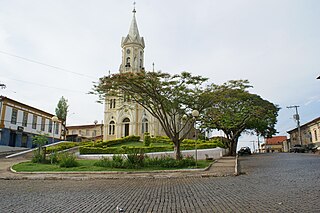
Entre Rios de Minas is a Brazilian municipality located in the state of Minas Gerais. The city belongs to the mesoregion Metropolitana de Belo Horizonte and to the microregion of Conselheiro Lafaiete.

The Neapolitan Horse, Italian: (Cavallo) Napoletano, Neapolitano or Napolitano, is a horse breed that originated in the plains between Naples and Caserta, in the Campania region of Italy, but which may have been bred throughout the Kingdom of Naples. The Neapolitan horse was frequently mentioned in literature from the 16th to the 19th centuries, and is noted for its quality. Corte wrote in 1562: "in Italy the horses of the Kingdom of Naples are greatly esteemed; [there] many fine coursers are born ... suitable for use in war and in the manège and for every service that the rider may require". The decline of the breed was noted in the early 20th century by Mascheroni (1903) and Fogliata (1908). Some sources state that by 1950, the original Neapolitan horse was deemed extinct, but its lines were incorporated into other breeds, most notably the Lipizzaner. An attempt to recreate this breed resulted in the modern breed called Napolitano.
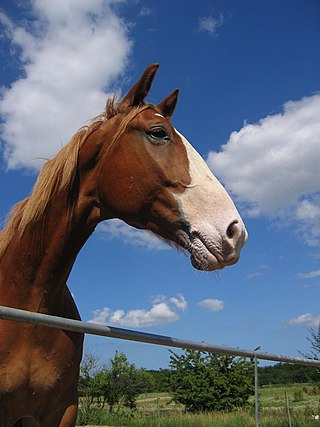
The Frederiksborger is Denmark's oldest horse breed. They were tremendously popular throughout the Renaissance and Baroque periods and were considered luxury items. Today, the breed is rare, but has a loyal following. Stallions and mares undergo studbook inspections before being allowed to breed. They are most often chestnut with white markings.
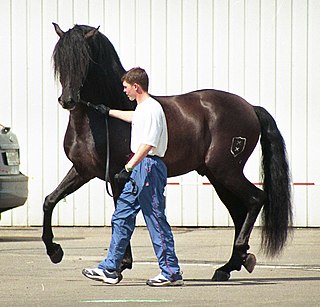
The Andalusian, also known as the Pure Spanish Horse or PRE, is a horse breed from the Iberian Peninsula, where its ancestors have lived for thousands of years. The Andalusian has been recognized as a distinct breed since the 15th century, and its conformation has changed very little over the centuries. Throughout its history, it has been known for its prowess as a war horse, and was prized by the nobility. The breed was used as a tool of diplomacy by the Spanish government, and kings across Europe rode and owned Spanish horses. During the 19th century, warfare, disease and crossbreeding reduced herd numbers dramatically, and despite some recovery in the late 19th century, the trend continued into the early 20th century. Exports of Andalusians from Spain were restricted until the 1960s, but the breed has since spread throughout the world, despite their low population. In 2010, there were more than 185,000 registered Andalusians worldwide.
The Vlaamperd is a South African breed of light draught or harness horse; it is also suitable for riding. It was bred in the Western Cape region of South Africa in the early twentieth century, and resulted from cross-breeding of local mares with imported European stallions, particularly Friesians. The horses are usually black, though mares may be dark seal brown. A stud-book was started in 1983.
The Baroque Pinto is a Dutch horse breed of Baroque type founded in the 1950s and 1960s, using the Friesian horse, Dutch Warmblood (KWPN), German Warmblood, and other European warmblood breeds for its foundation stock. Some consider it to be a type of Friesian cross or Friesian Sporthorse, while others consider it to be its own breed.






















